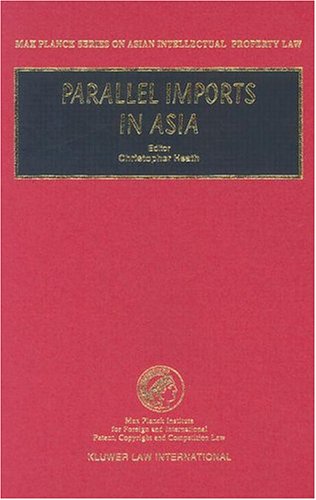
In the absence of international rules governing parallel imports and exhaustion of intellectual property rights, issues arising in this context are left to the individual countries concerned.
Asian countries, although generally more open towards parallel imports than Europe or the U.S., show marked differences both among their individual approaches and among the various intellectual property rights in question.
Increasingly, permitting or blocking parallel imports of intellectually protected goods is regarded as a political decision to accommodate foreign pressure, domestic consumers, or right holders. Due to the diversity of legal regimes in the jurisdictions covered, reliable information on the regimes of parallel imports in Asia has been hard to come by. Now, Parallel Imports in Asia brings together the insight and experience of fourteen academics and practitioners in this specialized but highly significant field, each highly respected in his or her particular country.
Two concise introductory chapters clearly present the economic and legal foundations of the subject matter. Then, thirteen chapters offer in-depth analysis of exhaustion of intellectual property rights and parallel imports.